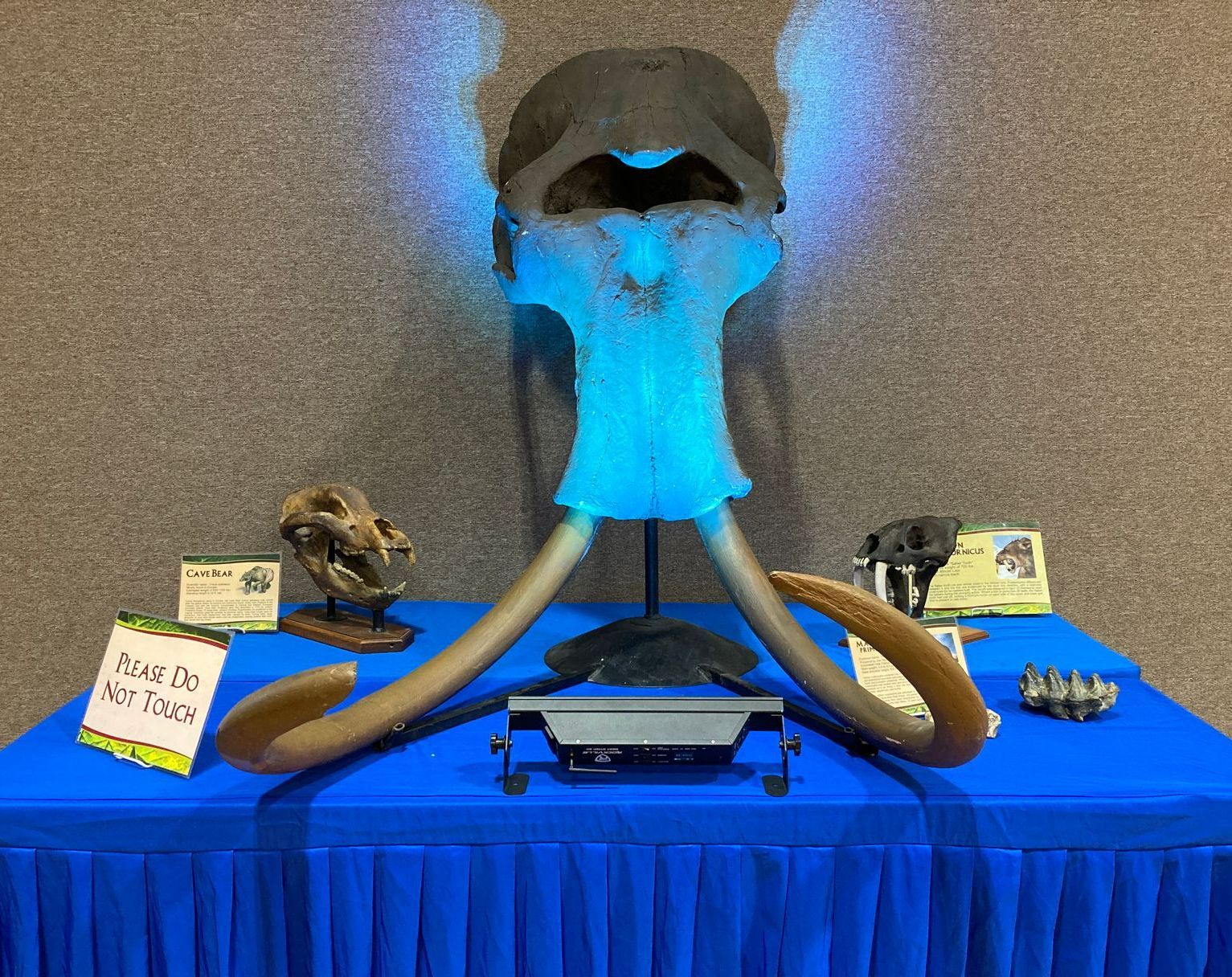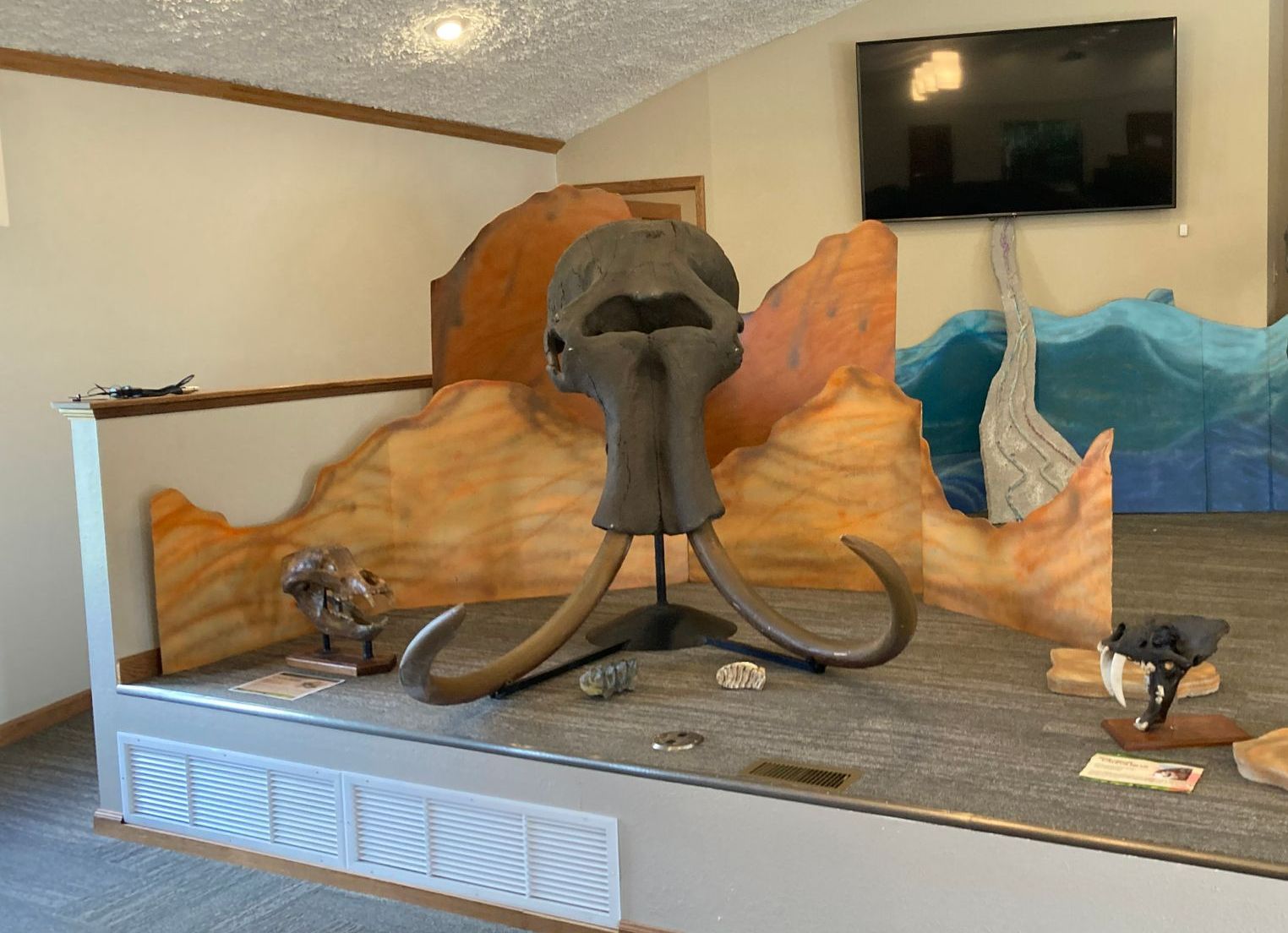New MOEH Addition, part 1
Wooly Mammoth
Scientific name: Mammuthus primigenius
Common name: Wooly Mammoth
Male shoulder height: 8.8 to 11.5 ft
Male weight: 4.3 to 9.0 tons
CTF skull: 7 ft long x 4 ft wide x 4 ft tall, discovered near Fairbanks Creek in Alaska, prepared by Joe Taylor
We are blessed to have available a piece that once travelled with Dr. Sharp and was prepared by a dear friend of his, Joe Taylor. This fossil has already been to a church, VBS, and church camp, where the theme for the week of camp was the Ice Age. We also displayed several of our other Ice Age fossils.
Wooly mammoths comprise one of the ten identified species of the genus Mammuthus. They are believed to have been well adapted for colder climates due to the discovery of long guard hairs and a shorter undercoat. While close to the same size as today’s African elephants, mammoths had smaller ears and shorter tails. They had four teeth (molars) that would be replaced up to six times in their life. Based on extracted stomach contents, their diet seems to have been mostly grasses, sagebrush, yarrow, and mums.
Mammoth specimens have been discovered throughout northern Asia and North America. Though once believed by some to have been flash-frozen, the presence of loess (wind-blown silt) in lungs and surrounding sediment (“yedomas” and muck) indicates they were killed and sometimes buried by dust storms as the Ice Age began to end. Several million mammoths are estimated to be buried throughout Siberia, Beringia, and Alaska. Others, such as those unearthed at Waco Mammoth National Monument in Texas, were buried by rapid flooding due to Ice Age melt.
A 2018 genetic study¹ found Wooly Mammoths once interbred with present-day African forest elephants, as well as Columbian mammoths. This caused evolutionists to rewrite their mythology as the science once again did not support their faith, but instead supported the Biblical record of created kinds.
We praise the Lord for these incredible specimens that declare the glory of our God!
1. Palkopoulou, et al. “A comprehensive genomic history of extinct and living elephants.” Proceedings of the National Academy of Sciences. 26 February 2018 <https://www.ncbi.nlm.nih.gov/pmc/articles/PMC5856550/>.






